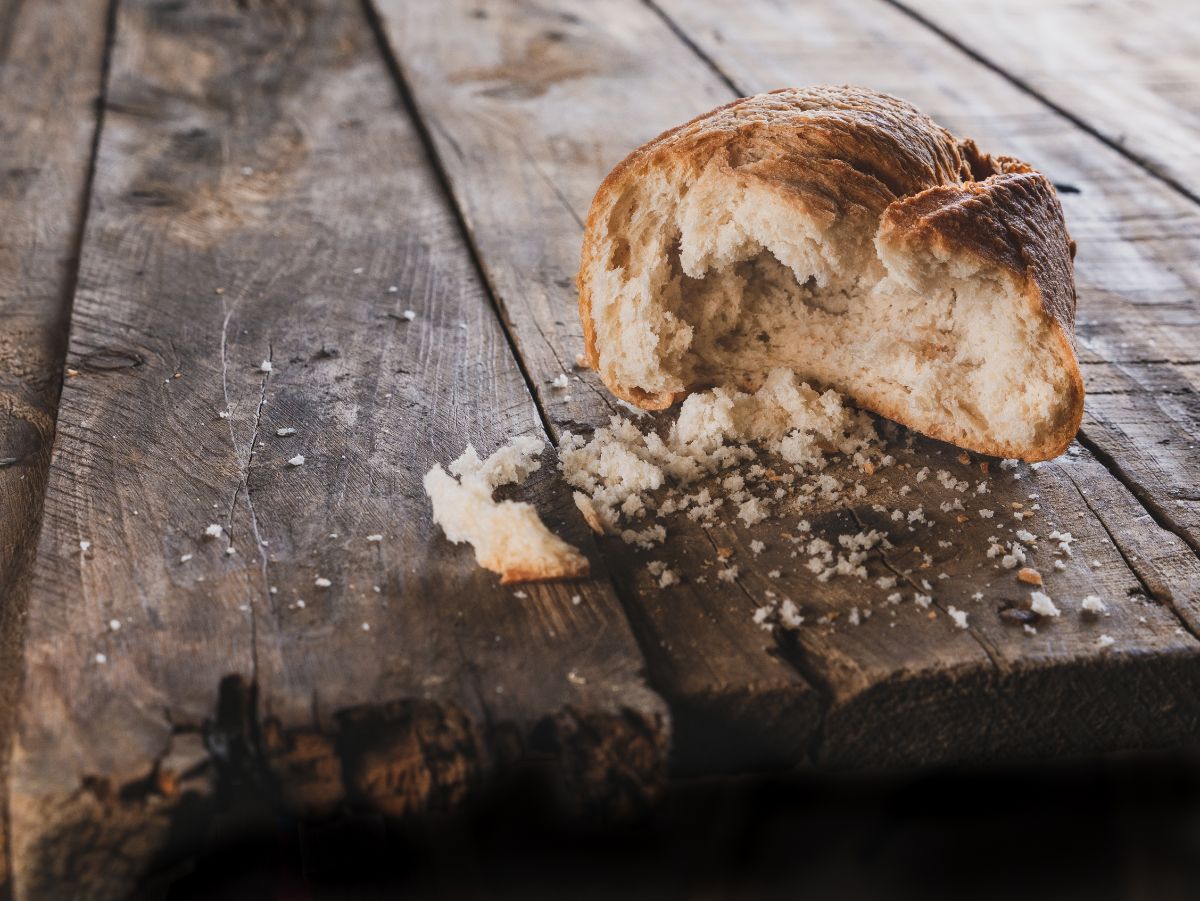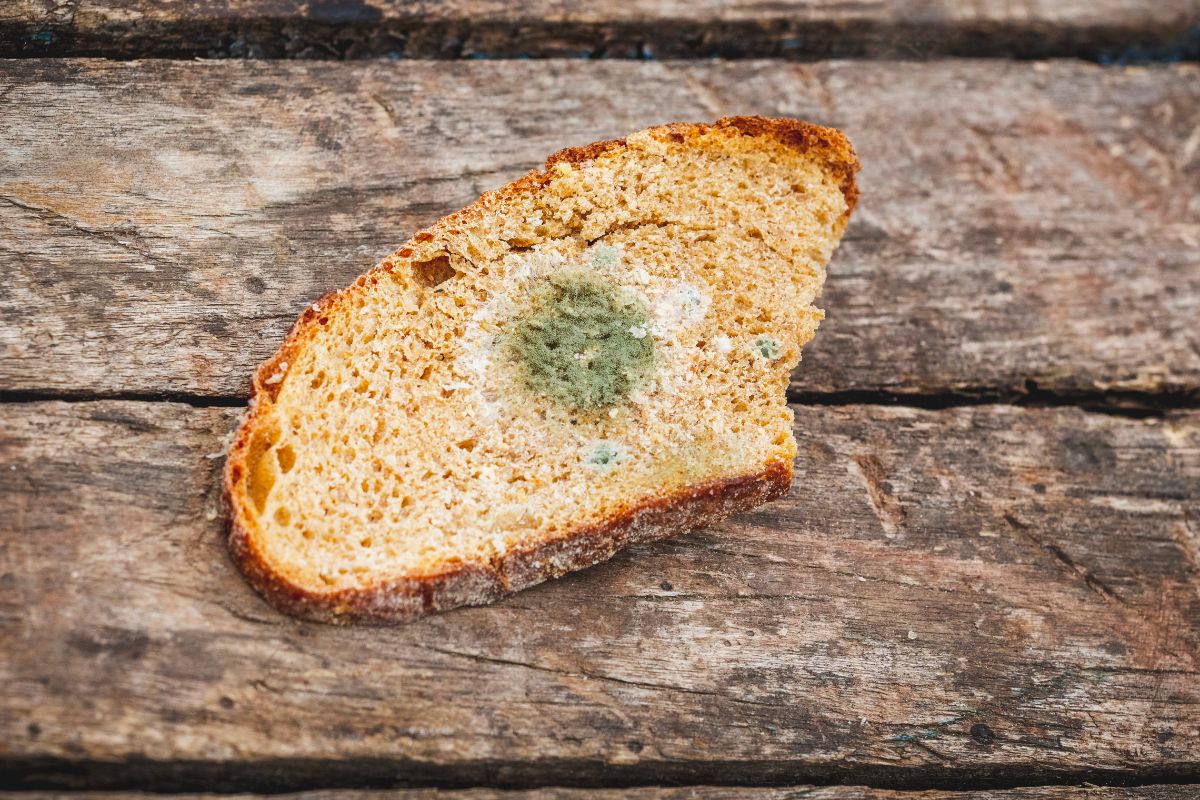A lot is circulating online about the benefits of eating stale or sour loaves. In one way it is linked to colon cancer curative measures.

To some, it is a therapeutic measure for abnormal body temperatures, sugar levels, body acidity levels, and other health-related problems. And, since disposing of the old yeasty treasures can be painstaking, you can be left wondering about what to make out of them.
The question is, can old bread make you sick? When bread grows old, it becomes sour, moldy or stale. One of the best ways to get poisoned is by taking old bread. You will develop headaches, nasal congestion, stomach problem, and a lot more illnesses.
Old here relates to any duration beyond the shelf-life. And, not the expiration date. You see, a loaf of bread may be fresh for eating even after the expiration period. It all depends on the type of ingredients used and the prevailing environmental conditions. By freezing, you can save an expired bread for almost three months without causing any damage.
How Do You Know When the Bread Has Grown Old?
You will spot an old loaf of bread by its foul smell, taste, or appearance. It looks nasty with splotchy or discolored patches. Black bread mold and penicillin are some of the popular microorganisms that will cover your old loaf. Otherwise, old bread may also be leathery with a hard texture. This happens even in a moist environment.
Depending on what the bread is made with, the shelf lives vary so much. Bread with milk or egg has a shelf life of only two to three days. However, regular leavened-bread can take more than seven days before going bad. Cooked French toasts and frozen bread takes approximately 3 hours and 1 day respectively to get bad. Otherwise, these snacks can last for 6 to 8 months in a freezer before getting bad.
Effects of Eating Moldy Bread
Molds are the first scope to consider when looking for old bread. They can be dark, fuzzy white, green or any other color. The fact that you don’t see the molds on the surface of the gem doesn’t mean that it is safe from mold. Chances are that the molds are growing deep inside it without you knowing.
One thing that comes with molds is the foul smell. However, not every type of mold-covered loaves comes with a smell. Some retain their original smell but with off-flavors.

Some molds such as those that grow on blue cheese are good for human health. However, bread molds are life-threatening. Do not even smell the mold, leave alone eat the bread itself.
For people with mold allergies, inhaling the mold can lead to serious breathing problems. These include asthma and a running nose. They also experience life-threatening allergic reactions such as anaphylaxis. This also happens when they consume the moldy bread in the body.
For people with weak immune systems, rhizopus on the bread can cause other health effects that range from digestive to respiratory. These include stomachache, headache, nausea, and vomiting.
Certain types of mold also contain mycotoxigenic strain. These substances are carcinogenic. With regular intake of the chemicals, you can suffer acute cancer cases more so the stomach, throat and colon cancer.
But, what if you chop off the mold-covered part and eat the uncolored part?
This is absolutely wrong with any person. In reality, with naked eyes, all you can see is the colony of mold. They are what cause the coloration. Deep inside the bread is some other tiny molds spreading throughout the bread. In fact, by the time you will be able to see the spores, there are high chances that the bread is fully covered.
Effects of Consuming Stale Bread
Stale bread is one of the horrible things that you can consume as a person. They are band, dry and tasteless. Munching on the stale loaves will leave the roof of your mouth covered to the brim. Anyway, as long as you have an excellent immune system, there are not many side effects linked to eating it.
However, a lot is said about the health benefits of stale bread. In recent research, health professionals at the Royal Melbourne Institute found out that people who eat stale bread have lower risks of colon cancer.
According to the research, stale bread contains resistant starch. This set of carbohydrate molecules is digestion by body enzymes. As a result, only the intestinal bacteria can eat it. In the process of its consumption, there are various forms of byproducts that are released. These byproducts help in fighting obesity, enhancing the growth of healthy cells, regulating digestive hormones, and generally reducing the risks of colon cancer.
White stale loaves are the best in resistant starch. According to the scientist, taking at least one loaf of stale bread per day can immensely reduce the effects of colon cancer.
Some other benefits linked to stale bread include:
- Keeping the ideal body temperatures
- Keeping the ideal body blood pressure
- Maintaining an ideal acidity level in the body
Stale bread only loses the moisture content and flavor. Anything that has a bizarre coloration and abnormal smell is harmful to your body.
How to Stale Your Bread
There are different ways to staling bread. You can slice the bread into tiny pieces and leave them in an open-air for at least five hours. By so doing, their surface areas will be exposed to air hence they will end up losing the moisture contents.
Alternatively, you can turn to your oven. Quick bake the bread at a temperature of about 350 F for about 15-20 minutes. This process will starve the bread of any molecule of moisture that exists between its particles.
The last in the list is through freezing. However, it can take a good time before the freezer completely removes the moisture. Otherwise, the loaf can suffer freezer burn.
Conclusion
To save your health, just throw the bread away. After all, it does not cost much in terms of money, effort, and time to acquire a new one. Only anything crumbly, crusty, and with ideal color should pass through your throat.
